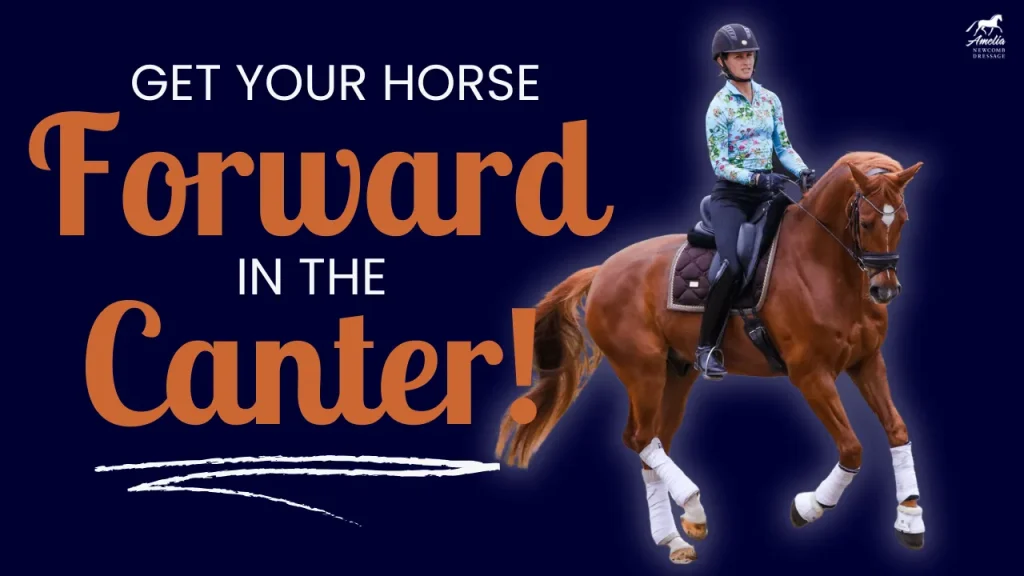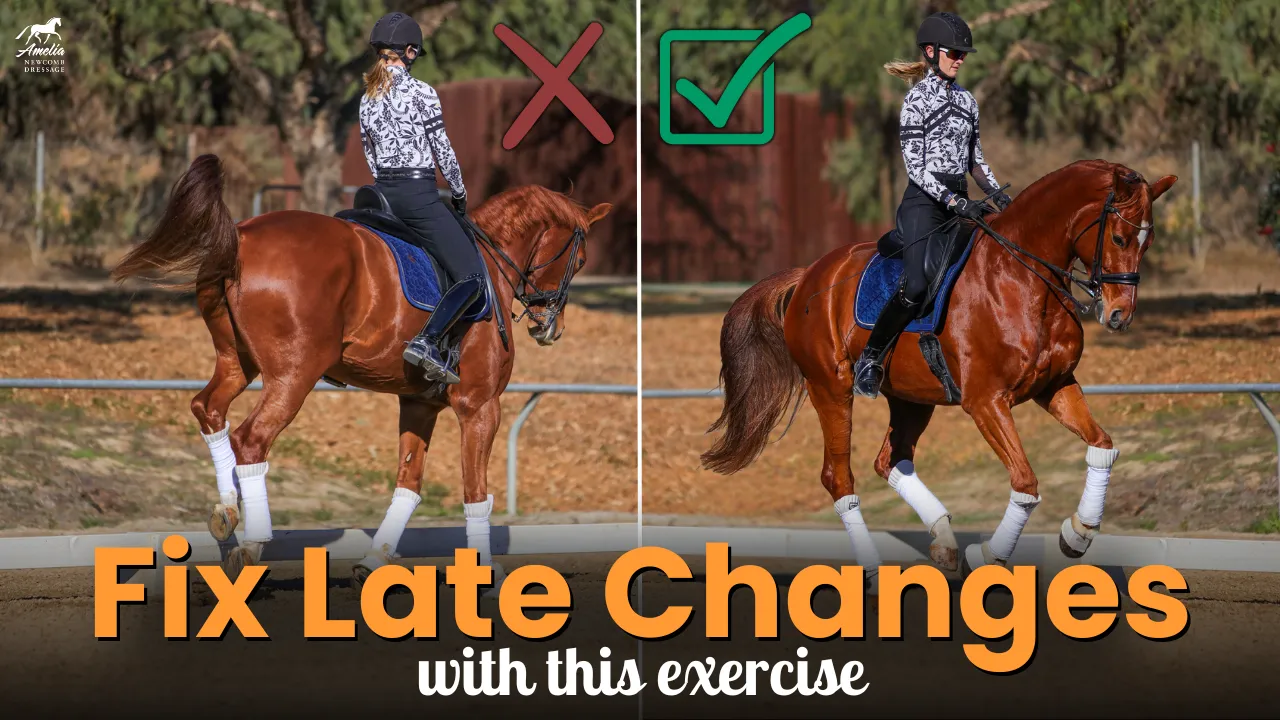Counter canter is a valuable exercise that improves your horse’s balance, straightness, and suppleness. While it first appears in First Level Test 3, it plays a key role throughout the levels, including in movements like half pirouettes and flying changes in the Prix St. Georges. Here’s how to begin introducing counter canter to your horse.
Step 1: Start with a mini-loop but go straight on the Quarter Line
Begin by riding a loop (corner, X, corner) but instead of going to X, just go to the quarter line, then continue straight rather than finishing the loop. This is a great test of balance in the counter canter without over facing your horse. Keep your horse slightly flexed to the inside to help maintain the lead. Ensure that the canter remains steady and rhythmical.
Step 2: Gradually Introduce Turns
Once your horse is comfortable and balanced on the quarter line, introduce a gradual turn back toward the rail (ie doing a loop only to the quarter line). Focus on maintaining the same canter rhythm and balance throughout the turn.
Step 3: Increase the Challenge
As your horse becomes more confident, progress to riding a shallow serpentine (aka loop). This involves going out to the center line and returning to the rail while maintaining the same lead. This movement mirrors what is required in First Level Test 3 and helps your horse understand the concept of counter canter.
Exercise Progression:
- Start with simply turning from the corner to the quarter line and going straight.
- Then make small loops from the quarter line to the rail.
- Extend the loop to the center line and back to the rail.
Repeat on Both Leads
Always practice counter canter evenly in both directions to build your horse’s strength and balance on both leads. This ensures that your horse develops symmetry and is prepared for more advanced movements.
Common Pitfalls and Fixes
- Losing the Lead: If your horse breaks or changes leads, rebalance in the working canter and try again with smaller loops.
- Rushing: Slow down and ensure your horse is calm and attentive before asking for counter canter.
Introducing counter canter takes patience and consistency. By breaking it into manageable steps, you’ll help your horse develop confidence and strength in this essential exercise. Remember, counter canter not only prepares your horse for higher levels but also improves the overall quality of their canter!
Happy Riding!
Amelia












































